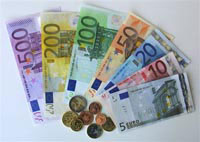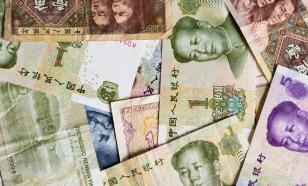Australian dollar to follow Canadian example topping its US brother
The Australian dollar hit a 23-year high Monday as stronger-than-expected U.S. jobs data eased fears for the U.S. economy.

But analysts remain divided on future direction for the currency, with an uncertain global economic outlook and concerns over the credit crisis still hovering in the background.
Early in the Asian session, the local unit spiked over the US$0.90 mark, its highest level since 1984. The Australian dollar is now within ten cents of parity with the U.S. dollar, which would be a first for the currency since it was floated in 1983.
While the near term trend is upward, the gains cannot be sustained, said John Horner, a currency strategist with Deutsche Bank.
"It's supported by expectations of resilience of global growth and the return to favor for high risk," Horner said. "In the more medium term we remain cautious though about the outlook, given ... more widespread signs of slowing economies, not just in U.S."
Horner isn't predicting parity with the U.S. dollar.
The local currency has been volatile since the global credit crisis erupted in August, but it has now fully retraced heavy losses incurred during the peak of the squeeze, when it dipped below US$0.7700.
The Australian currency was trading at US$0.8800 in late July, the AP reports.
Wise-owl analyst Tim Morris said booming Middle Eastern states such as Saudi Arabia, the United Arab Emirates and Bahrain could "provide another devastating blow for the greenback".
These countries, along with Qatar and Oman, have their currency exchange rates fixed - or "pegged" - to the US dollar and are under increasing pressure to abandon these pegs.
"Their pegged currency regimes have provided a great deal of indirect support for the US dollar over the years, as it forces them to hold large US dollar reserves," he said.
Mr Morris said because exchange rates were pegged, these countries were usually forced to follow the US lead when it dropped interest rates, as it did last month because of the credit crunch and weakening economy.
"The last thing that these booming Arab economies need is an interest rate cut," he said.
"A reduction in borrowing costs would provide further unnecessary stimulation to their economies, potentially igniting inflation.
"Abandoning the US dollar peg is one of the few available means of dealing with these pressures, meaning the Arabian support pillar currently under the US dollar could be in jeopardy."
Kuwait and Syria have already abandoned their US dollar currency pegs this year, news.com.au reports.
"The downside risks to the US dollar are likely to keep on building as the pressure on Arabian central banks heats up and their patience towards the greenback continues to wane," Mr Morris said.
Source: agencies
Subscribe to Pravda.Ru Telegram channel, Facebook, RSS!

